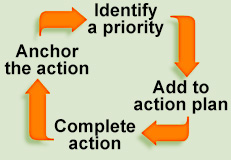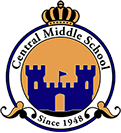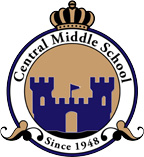How can school leaders sustain the positive efforts toward creating inclusive school environments?
Page 12: Anchor the Changes
 As school personnel accomplish each step in the action plan, they need to embed, or anchor, these changes in the structures and behaviors that are part of the day-to-day routine of the school. The team can accomplish this by gradually infusing the changes into documents that guide the school’s processes and procedures, such as:
As school personnel accomplish each step in the action plan, they need to embed, or anchor, these changes in the structures and behaviors that are part of the day-to-day routine of the school. The team can accomplish this by gradually infusing the changes into documents that guide the school’s processes and procedures, such as:
- School Improvement Plan
- Principal evaluations
- Teacher evaluations
- Proposed budget spreadsheet
- School, parent, and student handbooks
In addition, the principal can anchor changes that promote inclusion by hiring, promoting, and developing employees who are supportive of the vision—an inclusive school. In other words, building leadership capacity leads to sustainability. As more school personnel participate in the change effort, it will become more widespread and may be accomplished sooner.
For Your Information
In most schools, creating an inclusive school environment may take three to five years. When an item in the action plan is completed and anchored, the guiding team needs to:

- Revisit the list of identified priorities (e.g., SWOT analysis) and select the next priority.
- Add the new item to the action plan.
- Complete the item.
- Anchor the item into school processes and procedures.
This recursive process reinvigorates the change effort with new activities and serves as an opportunity to involve more people in the creation of an inclusive environment. The process is continuous—new tasks are begun while older tasks are still being addressed. As progress is made or as new opportunities and threats arise, the team may decide to collect and analyze more recent data and create a new priority list.
recursive
glossary
 Ms. Lawrence continues to meet with the guiding team and with others now actively involved in the change effort to celebrate the accomplishment of action items, to identify the next action steps to address, and to make certain the teams have the resources they need. If changes at CMS are to become part of the school’s fabric, Ms. Lawrence knows that teachers and others on her staff will need to be held accountable. To do this, she meets with every staff person in the school to help him or him develop clear accountability items that will become part of his or her annual reviews. She also identifies professional development opportunities the staff requires to keep growing and learning the skills that will allow them to maintain and perpetuate the creation of an inclusive school. In addition, Ms. Lawrence posts the action plan and status on the school’s website so that they are clearly visible to the entire school community.
Ms. Lawrence continues to meet with the guiding team and with others now actively involved in the change effort to celebrate the accomplishment of action items, to identify the next action steps to address, and to make certain the teams have the resources they need. If changes at CMS are to become part of the school’s fabric, Ms. Lawrence knows that teachers and others on her staff will need to be held accountable. To do this, she meets with every staff person in the school to help him or him develop clear accountability items that will become part of his or her annual reviews. She also identifies professional development opportunities the staff requires to keep growing and learning the skills that will allow them to maintain and perpetuate the creation of an inclusive school. In addition, Ms. Lawrence posts the action plan and status on the school’s website so that they are clearly visible to the entire school community.
To model accountability, Ms. Lawrence asks the school director to hold her responsible for the creation of an inclusive school environment through her own annual principal evaluation, something she makes known to the team. Additionally, when creating the budget and fund raising plan, she includes resources and staff development activities the team will need to fulfill their major goals.
|
|||||
| Item | To Do | In Progress | Complete | ||
| Action items for creating an inclusive school environment, and their completion criteria, are included in each staff member’s annual evaluation form. | |||||
| Professional development needs regarding creating an inclusive school environment are clearly articulated in each staff member’s annual evaluation form. | |||||
| Action items for creating an inclusive school environment, and their completion criteria, are included in Ms. Lawrence’s annual evaluation form, which is submitted to the school director. | |||||
| Ms. Lawrence’s professional development needs regarding leading the change initiative are clearly articulated in annual evaluation form, which is submitted to the school director. | |||||
| The action plan is updated twice a year and included in the school improvement plan, which is submitted to the district and the state offices. | |||||
| The financial resources required to create an inclusive school environment at CMS are included in the annual budget and the fund-raising plan. | |||||
| The volunteer resources that would help to successfully create an inclusive school environment at CMS are included in the volunteer plan and the PTO’s annual plan. | |||||
| All outcome measures regarding the change effort are included on CMS’s website and in the newsletters. | |||||
| All student achievement data are clearly posted on CMS’s website and in the newsletters. | |||||
| Hire new teachers that support the vision of an inclusive school environment. | |||||
Activity
As your school moves toward inclusion, list at least three processes or procedures in which you would anchor your changes. Justify your answer.
